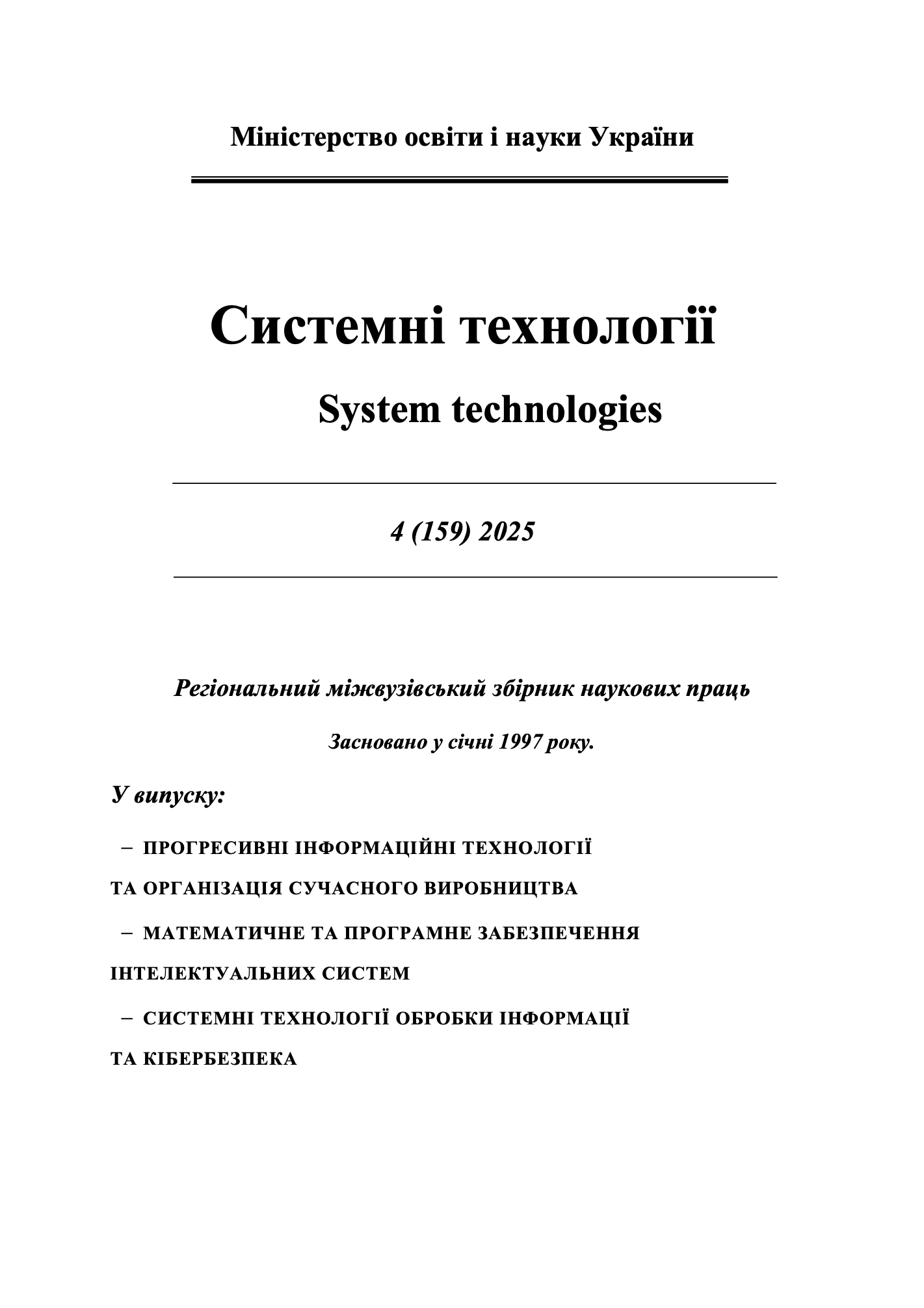Application of machine learning models for early detection of emergency situations based on streaming big data
DOI:
https://doi.org/10.34185/1562-9945-4-159-2025-09Keywords:
machine learning, deep learning, emergencies, big data, streaming data, LSTM, anomalies, early detection, monitoring, social media, Internet of Things (IoT).Abstract
The article addresses the pressing issue of early detection of emergency situations, such as natural disasters, industrial accidents, or epidemics, through the application of machine learning and deep learning models. The focus is on analyzing streaming big data sourced from Internet of Things (IoT) sensor networks and social media platforms, which provide re-al-time information. Traditional early warning systems, relying on methods like threshold de-tectors or statistical models, often lack the speed and precision needed to process large vol-umes of heterogeneous data in real time. To overcome these limitations, the study explores the effectiveness of advanced machine learning techniques, with an emphasis on deep learning. A hybrid LSTM-CNN model is proposed, integrating convolutional neural networks (CNN) for extracting local features from time series data with long short-term memory (LSTM) networks for capturing long-term dependencies. This model was evaluated using synthetic data from the Yahoo Webscope S5 dataset and real-world streams, such as Twitter posts during an earthquake in the Ternopil region. Experimental results revealed that the hybrid LSTM-CNN model achieves high accuracy (F1=0.90) and the shortest average detection latency (≈5.5 s), significantly outperforming traditional methods like threshold detectors (F1=0.67, latency 15 s) and support vector machines (SVM, F1=0.80, latency 8.5 s). Comparative analysis also included LSTM and LSTM-autoencoder models, which yielded slightly lower performance (F1=0.88 and F1=0.77, respectively) but still surpassed classical approaches. The advan-tages of deep learning are evident not only in higher accuracy but also in the models’ ability to detect subtle anomaly signals at early stages, which is critical for timely emergency re-sponse. Additionally, the potential of social media as a data source was demonstrated: Twit-ter analysis enabled earthquake detection within 1-5 minutes of its onset, outpacing official reports. These findings highlight the promise of the proposed models for emergency monitor-ing systems, such as industrial safety platforms or crisis management centers, where speed and reliability are paramount. The study also outlines limitations, including the need for broader testing on real-world datasets and addressing false positives in social media data.
References
Disaster and Pandemic Management Using Machine Learning: A Survey / V. Chamola et al. IEEE Internet of Things Journal. 2020. P. 1.
URL: https://doi.org/10.1109/jiot.2020.3044966.
Early detection of emergency events from social media: a new text clustering approach / L. Huang et al. Natural Hazards. 2022. Vol. 111, no. 1. P. 851–875.
URL: https://doi.org/10.1007/s11069-021-05081-1.
Luthfee, A. A., Abdulla, R., Thiruchelvam, V., Rana, M. E., Mukil, A., Bathich, A., Lau, C. Y. Early flood detection and avoidance using IoT and machine learning// American Institute of Physics Conference Series. – 2024. – Т. 3161. – Стаття № 020017.
URL: https://doi.org/10.1063/5.0230082.
Early Detection of Earthquakes Using IoT and Cloud Infrastructure: A Survey / M. S. Abdalzaher et al. Sustainability. 2023. Vol. 15, no. 15. P. 11713.
URL: https://doi.org/10.3390/su151511713.
Real‐Time Fault Tracking and Ground Motion Prediction for Large Earthquakes With HR‐GNSS and Deep Learning / J. Lin et al. Journal of Geophysical Research: Solid Earth. 2023. Vol. 128, no. 12. URL: https://doi.org/10.1029/2023jb027255.
Shen H., Ju Y., Zhu Z. Extracting Useful Emergency Information from Social Media: A Method Integrating Machine Learning and Rule-Based Classification. International Journal of Environmental Research and Public Health. 2023. Vol. 20, no. 3. P. 1862.
URL: https://doi.org/10.3390/ijerph20031862.
Duraj, A., Szczepaniak, P. S., Sadok, A. Detection of Anomalies in Data Streams Using the LSTM-CNN Model // Sensors. – 2023. – Т. 25, № 5. – Стаття № 1610.
URL: https://doi.org/10.3390/s25051610.
LT-FS-ID: Log-Transformed Feature Learning and Feature-Scaling-Based Machine Learning Algorithms to Predict the k-Barriers for Intrusion Detection Using Wireless Sensor Network / A. Singh et al. Sensors. 2022. Vol. 22, no. 3. P. 1070.
URL: https://doi.org/10.3390/s22031070.
Hashemi-Beni L., Puthenparampil M., Jamali A. A low-cost IoT-based deep learning method of water gauge measurement for flood monitoring. Geomatics, Natural Hazards and Risk. 2024. Vol. 15, no. 1. URL: https://doi.org/10.1080/19475705.2024.2364777.
A Review of Cutting-Edge Sensor Technologies for Improved Flood Monitoring and Damage Assessment / Y. Tao et al. Sensors. 2024. Vol. 24, no. 21. P. 7090.
URL: https://doi.org/10.3390/s24217090.
Velychko D.V. Kompiuteryzovana systema videonahliadu z funktsiieiu identyfikatsii ekstrenykh sytuatsii na osnovi shtuchnoho intelektu : kvalifikatsiina robota bakalavra za spetsialnistiu „123 — Kompiuterna inzheneriia“ / Velychko Diana Vadymivna. – Ternopil: TNTU, 2023. – 80 c.
Strutovskyi M. I., Neskorodieva T. V. Ekspertna systema dlia vyznachennia nebezpechnykh sytuatsii na zlitnykh smuhakh iz vykorystanniam mashynnoho navchannia. Prykladni informatsiini tekhnolohii. 2023. S. 326–328.
Pospielov, B. B., Andronov, V. A., Rybka, Ye. O., Meleshchenko, R. H., Karpets, K. M., Horinova, V. V., & Samoilov, M. O. (2019). Systema rannoho vyiavlennia nadzvychainykh sytuatsii.
Seismichnyi monitorynh. Holovnyi tsentr spetsialnoho kontroliu.
URL: https://gcsk.gov.ua/sejsmichnij-monitoring (date of access: 09.03.2025)
Downloads
Published
Issue
Section
License
Copyright (c) 2025 System technologies

This work is licensed under a Creative Commons Attribution 4.0 International License.















